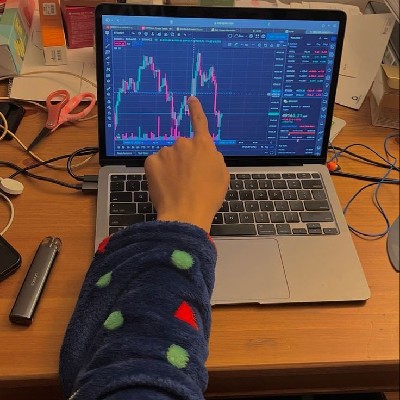
The current market price is around 0.25982 USDT, with a notable 9.76% decline in the recent timeframe. This shows that sellers have had the upper hand, but interestingly, the price is consolidating after an earlier sharp move. The 24-hour high of 0.32861 and low of 0.2380 show a wide trading range, suggesting that $OBOL is experiencing high volatility, likely from speculative trading or its new market listing.
Looking at the candlestick chart (4-hour view), the coin had a dramatic early spike to 0.5983 before collapsing to 0.2020—a clear sign of either market manipulation or a hyped-up debut that couldn't sustain momentum. Post-crash, the candles are showing smaller bodies with slight upward wicks, indicating attempts at recovery that are being capped by selling pressure. The most recent candles suggest some stabilization, but there’s no strong reversal yet.
Volume is telling: after that massive initial dump, the subsequent volumes are moderate but consistent, which could mean that traders are trying to find fair value at this level. The MACD (12,26,9) is at -0.00292 with its signal at -0.00160, both in the negative zone, indicating bearish momentum. The histogram remains red, which tells us the bears still have control but could be approaching exhaustion as selling loses strength.
The RSI (14) is about 29.68—close to oversold territory. This usually means a potential bounce or at least a pause in the downtrend, but RSI alone is not enough for confirmation. ROC (Rate of Change) is also flat, showing no major push in momentum either way recently.
The order book is quite revealing. On the buy side, the bids are clustered around 0.2593 to 0.2580, showing buyers are stepping in at slightly lower prices. However, the ask side (sellers) is stacked thickly just above current price levels, from 0.2598 up to 0.2620, indicating a tight battle zone. There are significant sell walls (for example, 3.23K and 5.20K volume units) at slightly higher prices, which could cap any quick breakout.
In terms of sentiment, the market is about 65% sell pressure against 35% buy pressure, suggesting a tilt toward bearishness, but not overwhelmingly so. This could change quickly if a fundamental catalyst appears.
From a predictive standpoint, unless OBOL has some real-world utility or a strong project roadmap backing it, its current behavior resembles that of a speculative asset—vulnerable to short-term trading moves and broader crypto market sentiment. External geopolitical risks also come into play: if large economies (like the U.S., EU, or China) tighten crypto regulations, it could drain liquidity and weigh on OBOL's price. Conversely, positive developments in Web3 adoption or new exchange listings could provide bullish triggers.
Considering all these data points, the short-term strategy might be to trade OBOL in defined ranges, capitalizing on its volatility. If you see clear support forming around 0.2380–0.2500, buying dips with tight stop-losses could be a smart play. However, if your risk tolerance is low, it’s best to hold off from long-term holding until the project shows stronger fundamentals and sustained upward trends.
To sum up: $OBOL is in a volatile, bearish phase post-listing with tentative signs of stabilization. The safest approach now is tactical trading rather than long-term holding unless more robust fundamentals emerge. Always keep an eye on global crypto policy shifts and tech news related to OBOL’s network for informed decisions.
Dow gains 250 points, Bitcoin reclaims $100k after Trump promotes U.K. trade deal
Markets were flashing green on Thursday as trade tensions eased following confirmation of a trade agreement between Washington and London.
The Dow Jones Industrial Average gained 254 points, or 0.62%, while the S&P 500 lagged slightly with a 0.58% gain. The Nasdaq outperformed, climbing 1.07%. Shares of Alphabet also rose after the company released a report stating its search traffic remains strong, despite earlier claims from an Apple executive that Safari search usage is declining due to rising AI adoption.
Bitcoin ( BTC ) traded above the $100,000 mark for the first time since early February.
Investors were in a buying mood as U.S. President Donald Trump confirmed that a trade deal with the United Kingdom may be finalized “in the coming weeks.” The agreement—the first of its kind since the Trump administration imposed widespread tariffs on trading partners—has fueled optimism that the era of steep tariffs might be temporary.
Boeing stock gained nearly 4%, boosted by news that the deal includes a $10 billion order for Boeing aircraft from London.
Trump also hinted at what he described as the “biggest tax cuts in history,” predicting that the U.S. economy would “soar like a rocket ship.”
U.S. Treasury Secretary Scott Bessent and Trade Representative Jamieson Greer are set to meet with their Chinese counterparts in Switzerland over the weekend to discuss trade and economic issues.



 最低價
最低價 最高價
最高價 











































